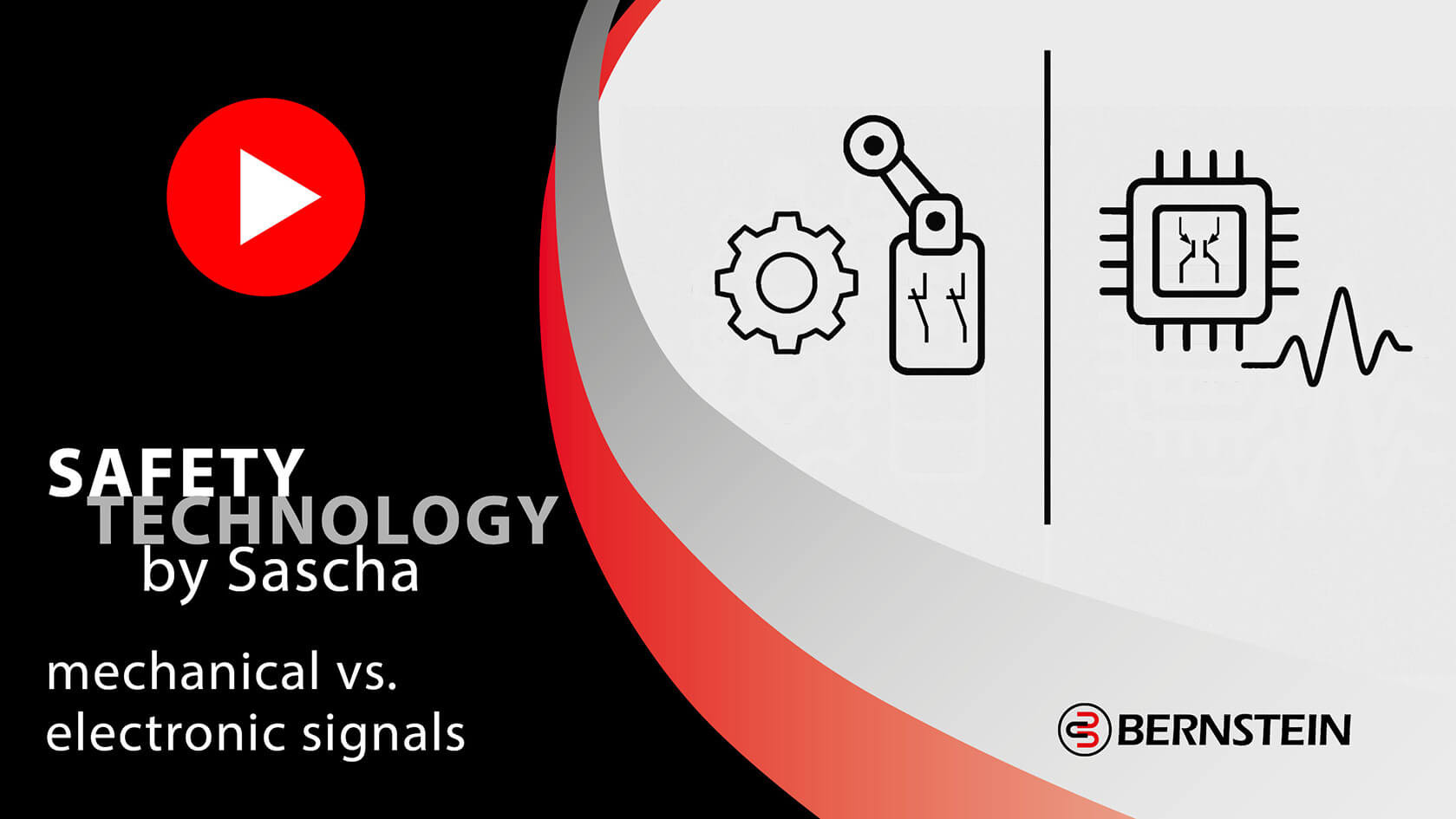OSSD outputs are a central component of modern machine safety. But what is behind the abbreviation? In this article, you will find out what the term means, how it works and why it is indispensable in safety-related applications. We also show you the advantages of the technology and how it is used at BERNSTEIN - clearly explained in a video.
What is OSSD?
OSSD stands for Output Signal Switching Device. This is an electronic, two-channel output that forwards the status of safety sensors or switches to a control system.
Typically, both signals monitor each other and faults such as short-circuits or cross-circuits are recognised immediately. This ensures that machines immediately switch to a safe state in the event of a fault.
How does OSSD work?
An OSSD output consists of two independent signals that operate in parallel. In normal operation, both channels supply a voltage of 24 volts and thus enable the safe state. At the same time, they generate short, time-delayed pulses. These pulses are then checked and analysed by the other channel. This self-test ensures that faults such as short-circuits or cross-circuits do not go undetected.
If there is a deviation, both outputs switch off immediately. For the control system, this means that the safety function is triggered and the machine is put into a safe state.
This mechanism therefore differs fundamentally from classic electromechanical contacts. While these do not have their own test mechanism and are monitored by a control system, OSSD is electronic, wear-free and permanently self-monitored.
Where are OSSD outputs used?
Today, they are the standard in many safety-related devices and ensure that the status of a safety device is clearly and reliably transmitted to the control system. Whether the door is open, locked or a fault is detected - the machine reacts immediately. OSSD therefore forms the basis for a wide range of safety applications in machine and plant engineering.
This technology also plays a central role at BERNSTEIN. It can be found in various product families, each of which has its own advantages depending on the area of application:
- RFID sensor SRF
Clearly recognises safety gates - and makes tampering difficult. If someone opens the door or an error occurs, the OSSD signals drop out immediately. The machine stops before anything can happen. - SEU electronic emergency stop
Our SEU emergency stop devices are all equipped with safe electronic outputs in the housing. - Smart Safety System
Connects several safety components to form an intelligent series connection. OSSD signals are collected, analysed and supplemented with additional diagnostic information and passed on. This means you always have safety and maintenance in view.
Advantages of products with OSSD outputs
The biggest advantage is the constant self-monitoring. Every fault is recognised - regardless of whether it is a short circuit or wiring fault. This ensures that the machine immediately switches to a safe state in an emergency. Relay contacts cannot do this because they work mechanically and do not have their own diagnostics. Here, monitoring always takes place indirectly via the connected evaluation.
Another advantage: no fault masking in the series connection. OSSD technology means that no fault is masked or ignored. Every single fault consistently leads to shutdown. This makes the technology particularly transparent and reliable.
To summarise, the advantages are as follows:
- Self-monitoring for maximum safety
- Fast fault detection in the event of a cable break, earth fault or short circuit
- No fault masking - every fault is recognised and dealt with
- Electronic instead of mechanical - therefore wear-free and durable
- High standard compliance up to performance level e (EN ISO 13849-1)
- Easy integration into modern control systems and relays
This makes OSSD a component that increases safety and at the same time reduces the effort required for diagnostics and maintenance.
Electronic signals explained simply - with video
How electronic signals work is sometimes difficult to describe in words alone. That's why we have created a short explanatory video. In it, our colleague shows step by step what is behind the two-channel outputs and why they are so important for safety.
Using the example of our RFID sensor SRF it becomes clear how OSSD signals work and what advantages they offer. So you not only get the theory explained, but also clearly conveyed.
Output signal switching devices as the basis for safe machines and processes
OSSD outputs are an integral part of machine safety. They operate on two channels, monitor themselves and recognise errors immediately - without error masking. They therefore offer greater safety, less maintenance and easy integration into modern control systems.
With products such as the RFID sensor SRF, the SEU emergency stop devices or our holistic solution, the Smart Safety System show just how versatile OSSD can be. The technology is therefore not only a solution for today, but also a reliable building block for the safety concepts of tomorrow.
